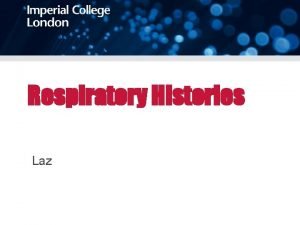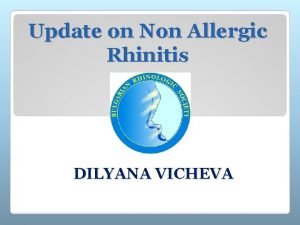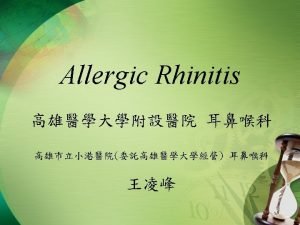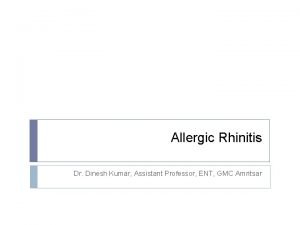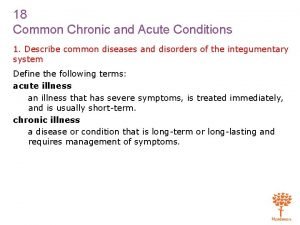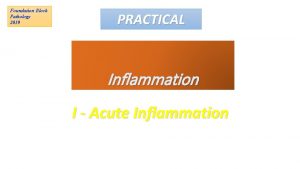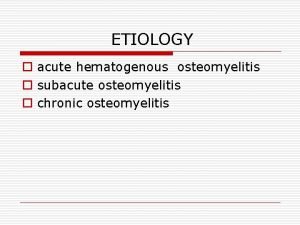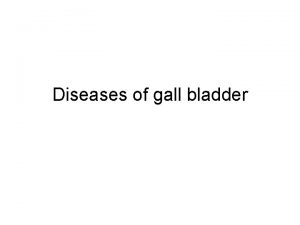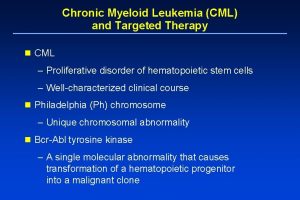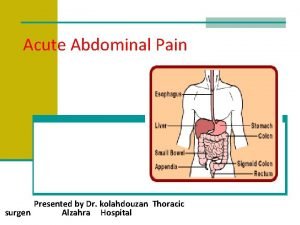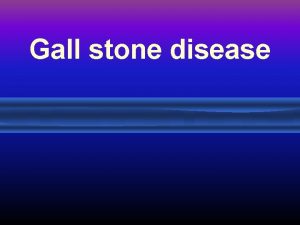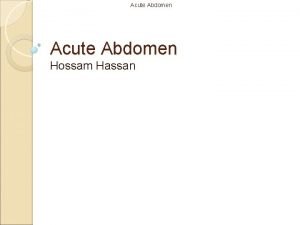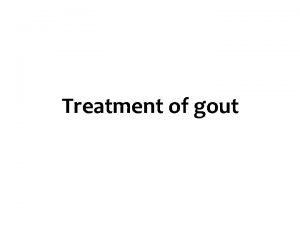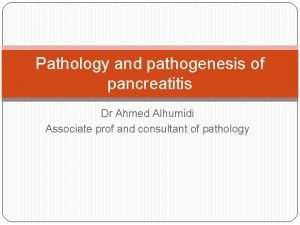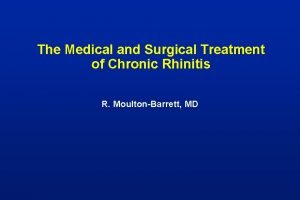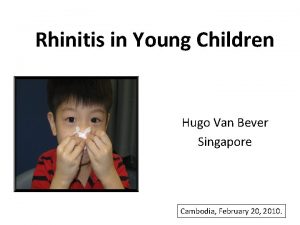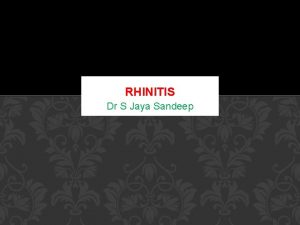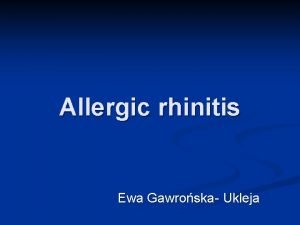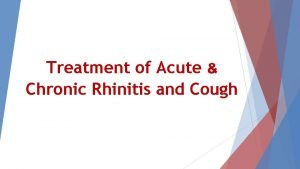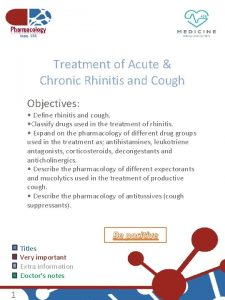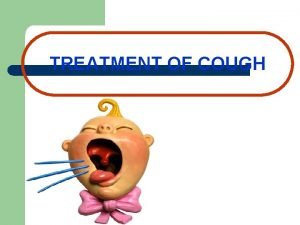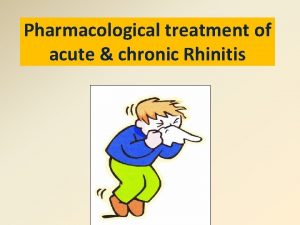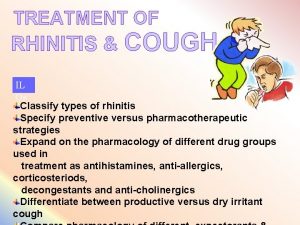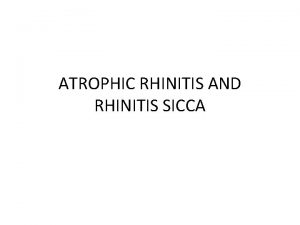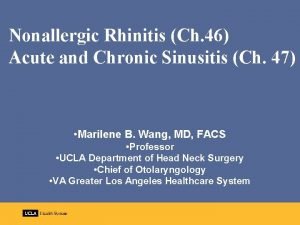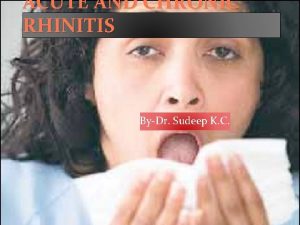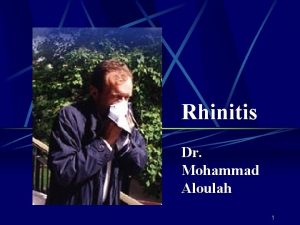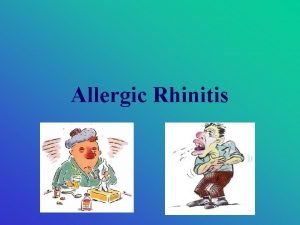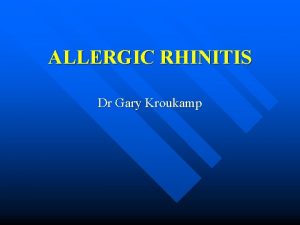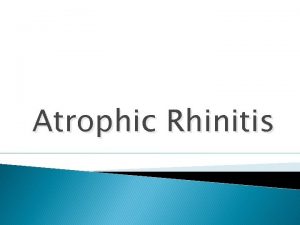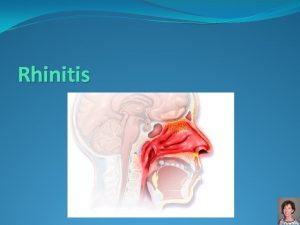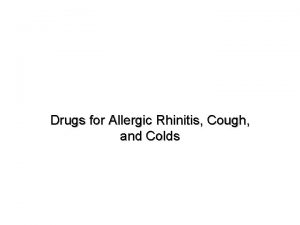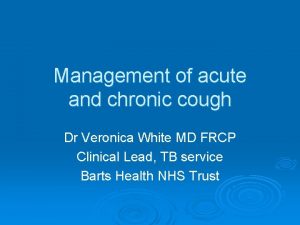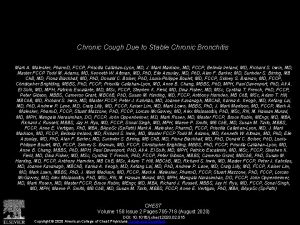Treatment of Acute Chronic Rhinitis and Cough 1














![2 -ANTI-ALLERGICS CROMOLYN & NEDOCROMYL Histamine release [mast cell stabilizer by inhibiting Cl channels] 2 -ANTI-ALLERGICS CROMOLYN & NEDOCROMYL Histamine release [mast cell stabilizer by inhibiting Cl channels]](https://slidetodoc.com/presentation_image_h2/3aa77321defea8fce77748c5eeafc6ad/image-15.jpg)









- Slides: 24

Treatment of Acute & Chronic Rhinitis and Cough 1

Learning objectives At the end of the lecture, students should be able to: Define rhinitis and cough Classify drugs used in the treatment of rhinitis Expand on the pharmacology of different drug groups used in the treatment as; antihistamines, leukotriene antagonists, corticosteroids, decongestants and anticholinergics Describe the pharmacology of different expectorants and mucolytics used in the treatment of productive cough Describe the pharmacology of antitussives (cough suppressants). 2

Rhinitis is the irritation &/or inflammation of the mucous membranes inside the nose Types: 1. Allergic (seasonal; hay fever & perennial) 2. infectious (infection with bacteria, fungi & viruses) q Rhinitis may be: Ø Acute (persist 7 -14 days) Ø Chronic (persistent more than 6 weeks) 3

Signs and symptoms of rhinitis: Runny nose (rhinorrhea; excess nasal secretion & discharge) Sneezing Nasal congestion/stuffy blocked nose Post nasal drip Systemic effects may be (fever, body aches, …, . . . ) 4

Treatment of Rhinitis A. Preventive Therapy: 1. Environmental control (dust control, pets …. . ) 2. Allergen immunotherapy B. Pharmacotherapy: 1. Anti-histamines (H 1 - receptor antagonists) 2. Anti-allergics a) Cromolyn sodium (mast cell stabilizer) b) Montelukast (Leukotriene receptor antagonists) 3. Corticosteroids 4. Decongestants (alpha- adrenergic agonists) 5. Anti-cholinergics 6. Antibiotics (if bacterial infection occur). 5

What is histamine? Histamine is a chemical messenger mostly generated in mast cell that mediates a wide range of cellular responses, Including; -Allergic and inflammatory reactions, -Gastric acid secretion - Neurotransmission in parts of the brain Histamine has no clinical application but antihistamines have important therapeutic applications. 6

Antihistamines (HI–receptor antagonists): The term antihistamine refers to the classic H 1– receptor blockers These drugs do not interfere with the formation or release of histamine They block the receptor- mediated response of a target tissue 7

1 - ANTIHISTAMINES H 1 receptor blockers C L A S S I F I C A T I O N [ Chemical / Functional] U S E S v s A D V E R S E EFFECTS First GENERATION Second GENERATION Third GENERATION 1) ALKYLAMINES 2) ETHANOLAMINES Chlorpheniramine Dimenhydrinate Diphenhydramine 3) ETHYLENEDIAMINES Antazoline` 4) PHENOTHIAZINES Promethazine 5) PIPERAZINE Cyclizine Cetirizine 6) PIPERIDINES Azatidine Loratadine Ketotifen 7) MISCELLANEOUS Cyproheptadine Levocetirizine Fexofenadine Desoloratadine Short duration Longer duration = better control Interactions; with enzyme No drug interactions & minimal ADRs inhibitors [ macrolides, antifungals, calcium antagonists] All are. ADRs used systemic or topical + additive pharmacodynamic 8

The older first generation drugs still widely used because they are effective and inexpensive These drugs penetrate the blood brain barrier (BBB) and cause sedation. Furthermore, they tend to interact with other receptors, producing a variety of unwanted adverse effects Second generation (Non-sedating) agents are specific for H 1 receptors and they carry polar groups, they do not penetrate the BBB causing less CNS depression. 9

Actions: The action of all the H 1 receptor blocker is qualitatively similar They are much more effective in preventing symptoms than reversing them once they have occurred Most of these drugs have additional effects unrelated to their blocking H 1 receptors, which probably reflect binding of H 1 antagonists to: § Cholinergic, § Adrenergic or, § Serotonin receptors 10

GOOD CONTROL of Rhinitis, Conjunctivitis, Urticaria, Flu (cough & sneezing) ALLERG POOR CONTROL of Asthma, Otitis, Anaphylaxis, Sinusitis, Atopic dermatitis. IES ITCHI INDICATIONS linked to H 1 Even NGif block non-allergic INDICATIONS not linked to H 1 ANTIHISTAMINES Others block Insomnia Sleep aid Vertigo Anxiety Cough Side Effects Interactions Side Effects Interactio ns 11

Therapeutic uses: 1. Allergic rhinitis, relieves rhinorrhea, sneezing, and itching of eyes and nasal mucosa 2. Common cold: dries out the nasal mucosa. Often combined with nasal decongestant and analgesics 3. Motion sickness 4. Allergic dermatoses: can control itching associated with insect bites 5. Nausea and vomiting (Promethazine) 12

Pharmacokinetics: H 1 receptor blockers are well absorbed after oral administration Maximum serum levels occurring at 1 -2 hours Average plasma half life is 4 to 6 hours H 1 - receptor blockers have high bioavailability and distributed to all tissues including CNS Metabolized by the hepatic cytochrome P 450 system Excretion occur via kidney except fexofenadine excreted in feces unchanged. 13

Adverse effects: Sedation, tinnitus, fatigue, dizziness, blurred vision, dry mouth Drug interaction: CNS depressants & cholinesterase inhibitors Overdose: The most common and dangerous effects of acute poisoning are those on CNS; including hallucinations, excitement, ataxia & convulsions. 14
![2 ANTIALLERGICS CROMOLYN NEDOCROMYL Histamine release mast cell stabilizer by inhibiting Cl channels 2 -ANTI-ALLERGICS CROMOLYN & NEDOCROMYL Histamine release [mast cell stabilizer by inhibiting Cl channels]](https://slidetodoc.com/presentation_image_h2/3aa77321defea8fce77748c5eeafc6ad/image-15.jpg)
2 -ANTI-ALLERGICS CROMOLYN & NEDOCROMYL Histamine release [mast cell stabilizer by inhibiting Cl channels] i. e. can act only prophylactic; it does not antagonize the released Used more in children for prophylaxis of perennial allergic histamine rhinitis Should be given on daily base and never stop abruptly. LEUKOTRIENE RECEPTOR ANTAGONISTS Montelukast Block leukotriene actions For prophylaxis of lower respiratory [i. e perennial allergen, exercise or aspirin-induced asthma] > upper respiratory allergies [chronic rhinosinusitis] ADRs; as in asthma Anti-inflammatory blocks phospholipase A 2 3 -CORTICOSTERIODS arachedonic a. synthesis prostaglandins & leukotrienes Topical (inhaled); steroid spray; beclomethasone, & fluticasone Given if severe intermittent or moderate persistent symptoms 15 ADRs; Nasal irritation, fungal infection, hoarseness of voice

-Adrenergic agonists For treatment of nasal stuffiness 4. TOPICAL SYSTEMIC DECONGESTAN PHENYLETHYLAMINES IMIDAZOLINE PSEUDOEPHEDR TS INE Ø Can cause nervousness, insomnia, tremors, palpitations, hypertension Ø Better avoided in hypertension, heart failure, angina pectoris, hyperthyroidism, glaucoma Phenylephrine Methoxamine Naphazoline Oxymetazoline HCI Xylometazoline HCI can cause Rebound nasal stuffiness (repeated administration ( > 10 days 2 weeks) Ipratropium 5. ANTICHOLINERGIC Given as nasal drops to control rhinorrhea S So very effective in vasomotor rhinitis (watery hyper-secretion). Its indication as bronchiodilator in asthma and ADRs see asthma 16

17

§ Coughing is sudden expulsion of air from the lungs through the epiglottis at an amazingly fast speed (~100 miles/ hr) to get of unwanted irritants § Abdominal & intercostal muscles contract, against the closed epiglottis pressure air is forcefully expelled to dislodge the triggering irritant. Cough may be “wet or productive” or “dry or irritant” 2 ndry to irritant vapors, gases, infections, cancer TREATMENT EXPECTORANTSMUCOLYTICS ANTITUSSIVE AGENTS For Productive Cough For Non-productive (dry) Cough 18

Act by removal of mucus through Reflex stimulation Irritate GIT stimulate gastropulmonary vagal reflex loosening & thinning of secretions ADRs ; Dry mouth, Guaifenesin chapped lips, risk of kidney stones ( uric a. excretion) Stimulate secretory glands respiratory fluids Direct production Iodinated glycerol, Na or K iodide / acetate , Ammonium stimulation chloride, Ipecacuahna ADRs of iodide preparations ; Unpleasant metallic taste, hypersensitivity, hypothyroidism, swollen salivary glands (overstimulation of salivary secretion), & flare of old TB. INDICATIONS Final outcome is that cough is indirectly diminished Common cold Bronchitis Pharyngitis Chronic paranasal sinusitis 19

Mucolytic agents are used to dissolve or breakdown mucus in the respiratory tract. They make the mucus less viscous so that it can be coughed up with more ease. MECHANISM OF ACTIONS Mucolysis occurs by one or more of the following; water content; Hypertonic Saline & Na. HCO 3 Adhesiveness; Steam inhalation Breakdown S-S bonds in glycoproteins less viscid mucous; NAcetyl Cysteine Synthesize serous mucus + activate ciliary clearance Bromohexine & Ambroxol Cleavage of extracellular bacterial DNA, that contributes to viscosity of sputum in case of infection; rh. DNAase = recombinant human deoxyribonuclease INDICATIONS (Pulmozyme) Most mucolytics effective as adjuvant therapy in COPD, asthma, bronchitis, 20

1. N-Acetylcysteine Breakdown S-S bonds in glycoproteins It is also a free radical scavenger used in acetaminophen overdose serous mucus 2. Bromhexine & its metabolite Ambroxol Synthesize They also immuno defence so antibiotics usage They also pain in acute sore throat 3. Pulmozyme (Dornase Alpha) A recombinant human deoxyribo-nuclease-1 enzyme that is neubilized Full benefit. appears within 3 -7 days 21

Stop or reduce cough peripherally or centrally by acting either 1. PERIPHERALLY ACTING ANTITUSSIVES A. Inhibitors of airway stretch receptors In Pharynx Use Demulcents form a protective coating Lozenges & Gargles In Larynx Use Emollients form a protective coating menthol & eucalyptus In Tracheobronchial Airway Use aerosols or inhalational of hot steam tincture benzoin compound & eucalyptus During bronchoscopy or bronchography Use local anaesthetic aerosols, as lidocaine, benzocaine, and tetracaine B. Inhibitors of pulmonary stretch receptors in alveoli Benzonatate sensitivity (numbing) of receptors by local anesthetic action. 22

2. CENTRALLY ACTING ANTITUSSIVES A. OPIOIDSactivating µ opioid receptors e. g. Codeine & Pholcodine B. NON-OPIODSAntihistaminics (>sedating) Dextromethorphan It threshold at cough center. It has benefits over opioids in being 1. As potent as codeine 2 - Less constipating 3 - No respiratory depression 4 - No inhibition of mucociliary clearance 5 - No addiction. ADRs nausea, vomiting, dizziness, rash & pruritus 23

GOOD LUCK 24
 Acute productive cough differential diagnosis
Acute productive cough differential diagnosis Astelazine
Astelazine Non allergic rhinitis treatment
Non allergic rhinitis treatment Management of allergic rhinitis
Management of allergic rhinitis Allergy shiners
Allergy shiners Honeymoon rhinitis treatment
Honeymoon rhinitis treatment Acute inflammation definition
Acute inflammation definition Chapter 18 common chronic and acute conditions
Chapter 18 common chronic and acute conditions Morphology of acute inflammation
Morphology of acute inflammation Leukemoid reaction
Leukemoid reaction Periradicular tissues
Periradicular tissues Acute cholecystitis vs chronic cholecystitis
Acute cholecystitis vs chronic cholecystitis Acute subacute chronic
Acute subacute chronic Gall bladder drawing
Gall bladder drawing Acute vs chronic heart failure
Acute vs chronic heart failure Cml stages
Cml stages Parietal pain
Parietal pain Biliary colic treatment
Biliary colic treatment Acute abdomen treatment
Acute abdomen treatment Acute gout attack treatment
Acute gout attack treatment What is acute hemorrhagic pancreatitis
What is acute hemorrhagic pancreatitis Rhinitis medicamentosa
Rhinitis medicamentosa Rhinitis in children
Rhinitis in children Eiterborken
Eiterborken Clarytyna
Clarytyna
